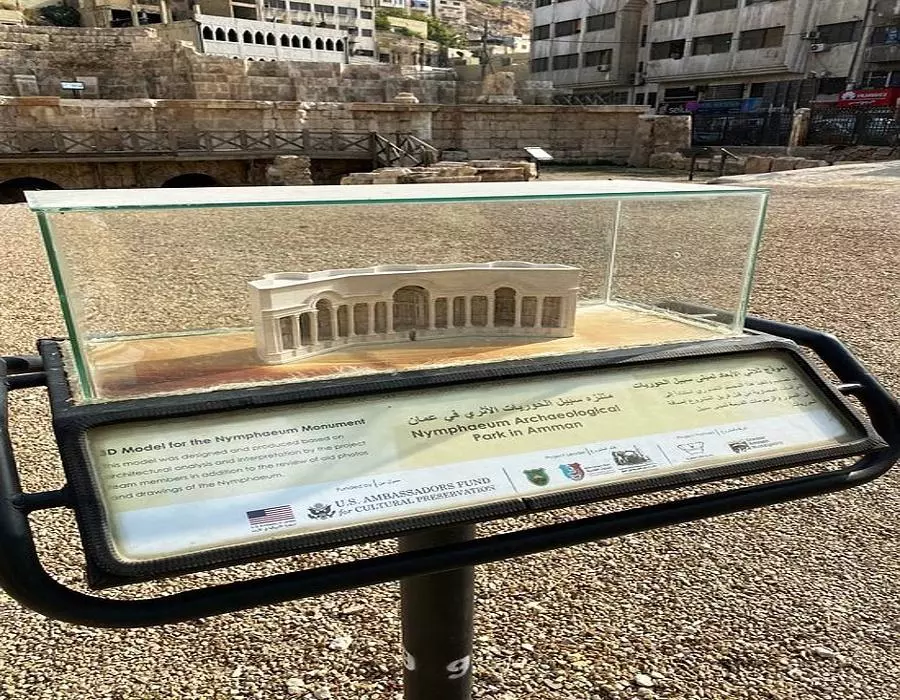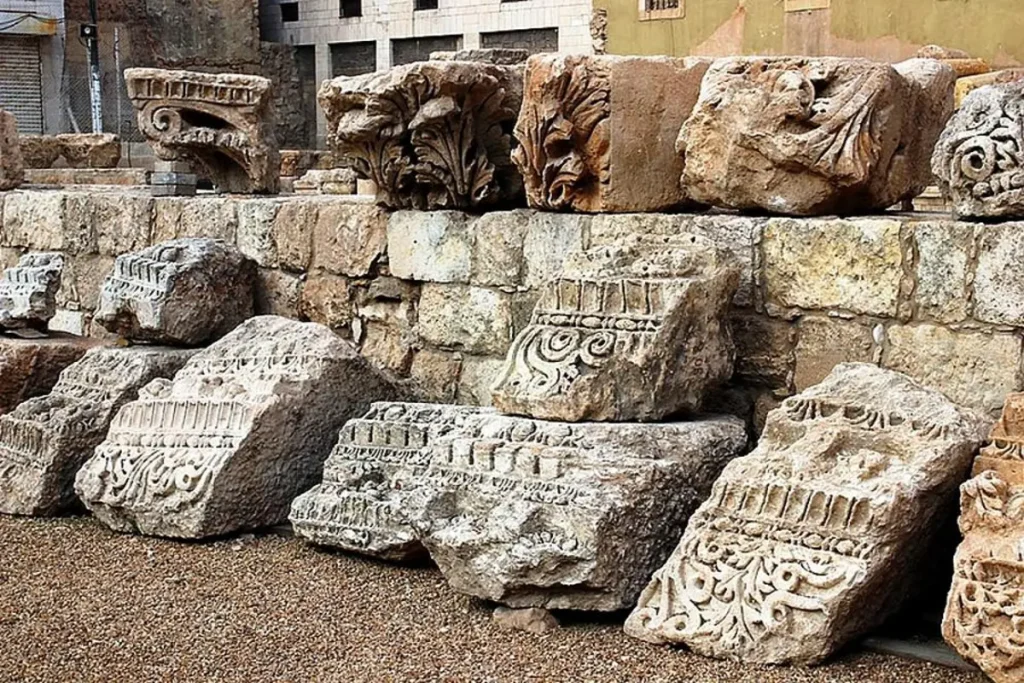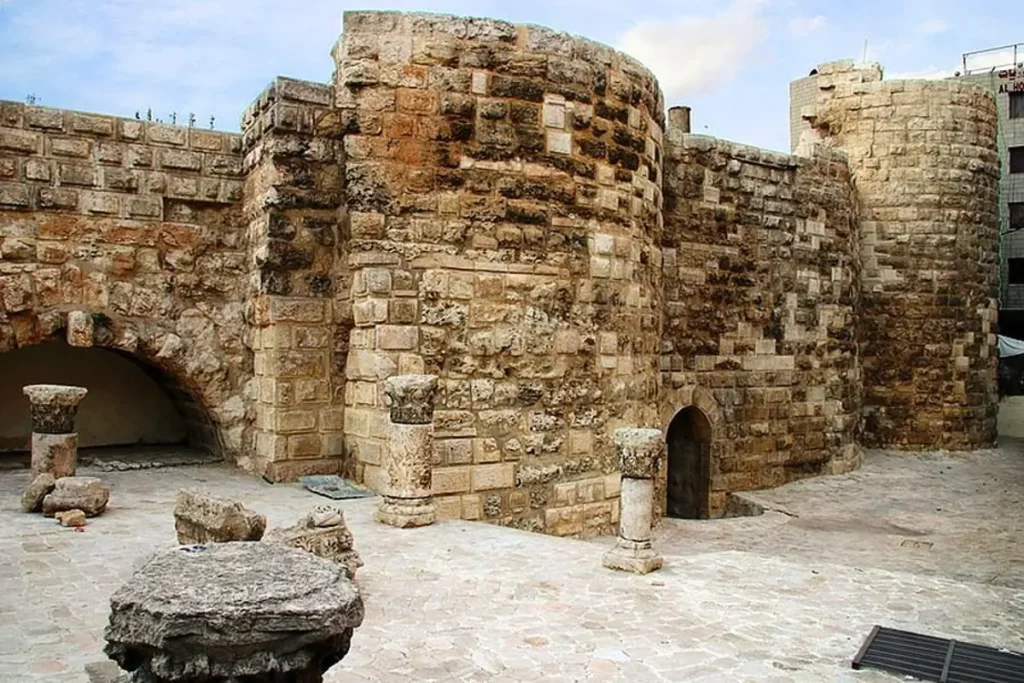The lowest nature reserve on earth !
THE NYMPHAEUM AT AMMAN - JORDAN
Main fountain dates back to the end of the 2nd century AD.
THE NYMPHAEUM
The Nymphaeum of Amman is one of the most remarkable remnants of Roman architecture in Jordan, reflecting the grandeur and sophistication of the ancient city of Philadelphia (modern-day Amman). Built in the 2nd century AD during the Roman period, this massive public fountain served as a vital water source and a decorative landmark, dedicated to the water nymphs of mythology. The Nymphaeum was a magnificent structure adorned with columns, intricate carvings, and statues, featuring a grand semicircular façade with cascading water flowing into large basins. It was originally covered in marble and housed elaborate mosaics, further enhancing its beauty. The fountain played a crucial role in the daily lives of Roman citizens, providing fresh water for public use while also serving as a social and cultural gathering spot.
Despite centuries of weathering and urban expansion, the ruins of the Nymphaeum still offer a glimpse into its former splendor. Archaeological efforts continue to preserve and restore parts of the structure, shedding light on its historical significance. Located in the heart of downtown Amman, near the Roman Theater, the Nymphaeum stands as a testament to the city’s rich heritage and its role as a thriving Roman metropolis. Today, visitors can explore its remains and imagine the grandeur of ancient Philadelphia, where water once flowed abundantly, bringing life and elegance to the bustling city streets.
Restoration Works of the Nymphaeum in Amman
In recent years, several restoration projects have been undertaken to preserve and rehabilitate the Nymphaeum of Amman, ensuring its historical and cultural significance remains intact. Given its age and exposure to natural erosion, urbanization, and pollution, the site had suffered significant deterioration. Restoration efforts, led by archaeologists and conservationists, have focused on stabilizing the remaining structures, cleaning the stonework, and reconstructing some of the original architectural elements. The goal is to protect the fountain’s intricate carvings and remaining water basins while preventing further damage to the delicate ruins.
One of the key aspects of the restoration process is water management, as the Nymphaeum was once a functioning public fountain. Researchers and engineers have been working on plans to restore partial water flow to recreate the site’s original function and atmosphere. Additionally, ongoing excavation efforts continue to uncover hidden details of the fountain’s design, helping historians better understand its role in ancient Philadelphia (Amman). These restoration works not only preserve the site for future generations but also enhance its appeal as a major tourist attraction, allowing visitors to experience a glimpse of the city’s Roman past.


Historical Significance of the Nymphaeum in Amman
The Nymphaeum of Amman holds great historical significance as a key public structure from the Roman period, reflecting the advanced engineering and urban planning of ancient Philadelphia (modern-day Amman). Built in the 2nd century AD, this grand fountain served as a vital water source for the city’s residents, providing a steady supply of fresh water for daily use. As an integral part of Roman civic life, nymphaea were not only practical water distribution points but also symbols of prosperity and architectural excellence. Their presence in major Roman cities demonstrated the empire’s ability to control and manage water resources efficiently. The Nymphaeum in Amman, strategically located near the Roman Theater, highlights the city’s importance as a thriving Roman provincial center.
Beyond its functional role, the Nymphaeum also served as a social and cultural hub where people gathered for leisure and conversation. It was often adorned with statues, intricate carvings, and decorative elements that reflected Roman artistic traditions and religious beliefs. Dedicated to the water nymphs, these grand fountains were considered sacred places, emphasizing the connection between nature and Roman spirituality. The presence of such a magnificent structure in Amman signifies the city’s prominence within the Roman Empire and its well-developed infrastructure. Today, despite the wear of time, the Nymphaeum remains a testament to the city’s rich history, offering insight into the daily lives and urban sophistication of ancient Philadelphia.
Architectural Features of the Nymphaeum in Amman
The Nymphaeum of Amman is an impressive example of Roman architectural brilliance, showcasing the advanced engineering and artistic craftsmanship of the 2nd century AD. This grand public fountain was designed as a monumental, semi-circular structure, typical of Roman nymphaea found throughout the empire. The façade originally stood at approximately 15 meters high and was elaborately decorated with Corinthian columns, intricate carvings, and niches that likely housed statues of water nymphs and Roman deities. The scale and design of the Nymphaeum reflected the importance of water in Roman public life and the city’s prosperity during this period.
A significant architectural feature of the Nymphaeum is its water system, which was connected to aqueducts that channeled fresh water into large, stone-lined basins. These basins, capable of holding hundreds of cubic meters of water, served both practical and decorative purposes. The structure was adorned with marble cladding and mosaics, enhancing its aesthetic appeal. Water cascaded from multiple outlets, creating a soothing ambiance while providing a vital resource for the city’s population. The architectural layout also included an open courtyard, allowing visitors to gather and socialize. Despite centuries of natural erosion and urban development, the remaining ruins of the Nymphaeum still reveal the sophistication of Roman engineering and the artistic beauty of ancient Philadelphia (Amman).
The Nymphaeum’s Role in Roman Religion and Mythology
In Roman religion and mythology, nymphaea were not merely decorative fountains but held deep spiritual significance. These structures were dedicated to the nymphs, nature spirits associated with freshwater sources such as springs, rivers, and wells. The Nymphaeum of Amman, like others across the Roman Empire, was a sacred space where people could honor these divine beings and seek their blessings for abundance, health, and prosperity. The flowing water symbolized life, purity, and renewal, reinforcing the Romans’ belief in the spiritual power of nature. Offerings such as flowers, coins, and small votive statues were often placed at these fountains in gratitude or as prayers for protection and good fortune.
Beyond its religious role, the Nymphaeum also played a part in imperial propaganda and civic pride. The grandeur of these fountains reflected the power and generosity of the Roman rulers, showcasing their ability to provide water—a vital resource—to the city’s inhabitants. This reinforced the idea that the emperor was a benefactor and guardian of the people, linking Roman leadership with divine favor. The artistic elements of the Nymphaeum, including niches that likely housed statues of deities or local patron gods, further emphasized its connection to the religious and cultural life of ancient Philadelphia (Amman). Today, while the fountain no longer serves its original religious function, its ruins stand as a testament to the deep intertwining of mythology, daily life, and civic identity in the Roman world.
Modern Efforts to Promote the Nymphaeum

Modern Efforts to Promote the Nymphaeum
In recent years, various efforts have been undertaken to promote the Nymphaeum of Amman as an important historical and cultural landmark. Given its significance as a Roman-era monument, conservation and restoration projects have been launched to preserve its remaining structures and enhance its visibility among tourists and scholars. Local authorities, in collaboration with international archaeological teams, have worked to stabilize the ruins, clean the stonework, and reconstruct damaged sections to give visitors a clearer understanding of its original grandeur. Additionally, initiatives have focused on improving signage, accessibility, and visitor engagement through guided tours and educational programs that highlight the site’s role in Amman’s Roman past.
Beyond physical restoration, modern promotional efforts also include digital tools and marketing campaigns aimed at increasing awareness of the Nymphaeum. Virtual reconstructions and 3D models have been created to illustrate how the fountain once looked and functioned in ancient times. The site has also been featured in tourism campaigns promoting Amman as a destination rich in archaeological treasures. Cultural festivals, historical exhibitions, and partnerships with museums have further elevated the Nymphaeum’s status as a must-visit site. As part of Amman’s broader heritage preservation strategy, these efforts ensure that the Nymphaeum continues to be recognized not only as a relic of the past but as a living testament to the city’s diverse and dynamic history.
